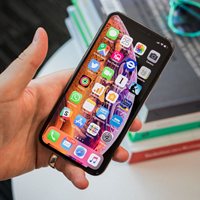
Apple’s technology has a large list of features, but users who have recently purchased an iPhone can’t immediately understand all the intricacies of the iOS operating system, so they usually can’t set the date and time on their own. If you encounter such a problem, we recommend that you read this material to the end.
Ways to change the date and time
Two options are possible here: manual and automatic. In manual you set the time, date, and in automatic you simply specify the time zone, and the system synchronizes time through the Internet second to second. To make it easier for you, we have considered both options.
Manual change of date and time
Attention! We describe the instructions for devices running iOS 13, so if you have a different version of the OS installed, some menu items may differ or are located in other sections. In this case, use the internal search. In iOS 13, your actions will be as follows:
- Go to the “Settings” on your iPhone and click on the “Basic” tab;
- Go to the tab “Date and time”;
- Select a date here by scrolling the drum as many times as necessary, and also select the current time;
- Be sure to select the time zone, and put the slider in front of the 24-hour format.
This completes the manual configuration process. You can go to this item at any time and change the settings.
Auto tuning
- As in the previous version, you need to go to the “Settings” of your gadget and click on the “Basic” tab;
- Next, click on the “Date and Time” section and opposite the “Automatic” item, set the slider to the “On” position. So you activate automatic time zone detection and time synchronization via the Internet.
Please note that the initial setup requires a network connection if you select the automatic option. This is not necessary in the future. To track time on macOS try Monitask
In most cases, Apple products automatically determine the time, date and time zone when you first turn on and activate devices, so do not rush to immediately go into the settings and change something there.